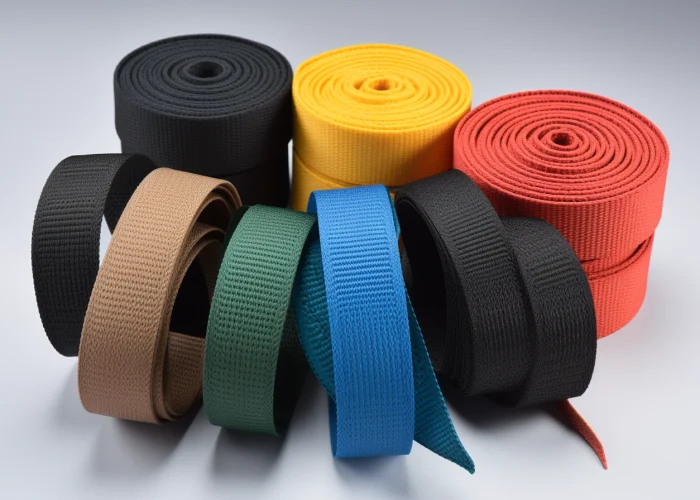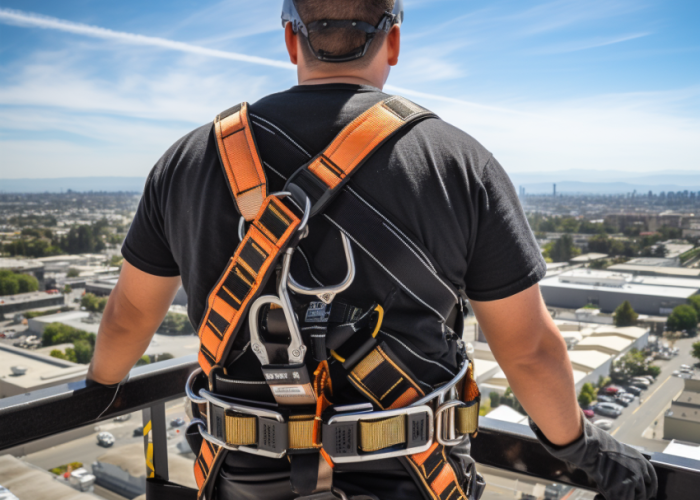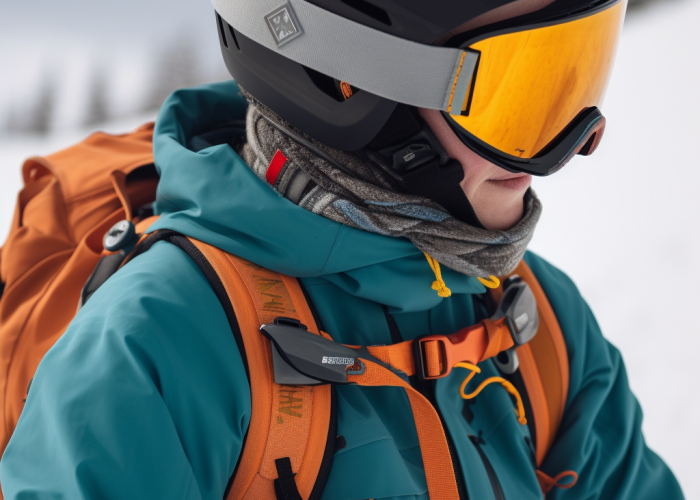Nylon webbing is a versatile material widely used in load-bearing applications from safety harnesses to outdoor gear. When engineers and product developers select materials for products exposed to sunlight, understanding UV resistance becomes crucial for ensuring long-term performance and safety.
No, nylon webbing is not UV resistant. It loses 50-60% of its strength after 36 months of continuous sun exposure, with noticeable degradation beginning at just 12 months. For outdoor applications, polyester webbing is recommended instead, as it maintains up to 75% of its strength under the same UV conditions.
degradation beginning as early as 12 months. For outdoor applications requiring high UV resistance, polyester webbing is generally the preferred alternative due to its superior performance under sun exposure.
Continue reading to discover the specific ways UV radiation affects nylon webbing’s performance, how to identify early signs of degradation, and what practical steps you can take to extend its service life in outdoor applications.


Webbing manufacturing expert with 15+ years of experience helping product developers build high-performance straps for industrial, medical, and outdoor use.
Nylon webbing degrades significantly faster under UV exposure than alternatives like polyester. When subjected to regular sunlight, nylon’s molecular structure begins to break down, compromising its integrity.
The degradation timeline is concerning for engineers and product developers:
Studies demonstrate that nylon webbing typically loses 50-60% of its original strength after just 36 months of UV exposure. More alarming is that significant degradation begins much earlier—with up to 60% strength loss possible between 12-36 months of regular sun exposure.
This rapid deterioration rate makes material selection critical for outdoor applications. The strength loss doesn’t occur in a linear fashion; instead, it accelerates over time as the material’s structure becomes increasingly compromised. For comparison, polyester webbing generally maintains its strength properties much longer under identical UV exposure conditions, making it the preferred choice for long-term outdoor use.
Product developers must consider this degradation timeline during the design phase, especially for safety-critical applications where sudden material failure could have serious consequences. Regular inspection and replacement schedules should account for this predictable strength reduction rather than relying solely on visible signs of damage, which often appear after significant structural degradation has already occurred.
Prolonged UV exposure causes nylon webbing to degrade through photodegradation, resulting in both visible and structural damage. The primary effects include color fading, increased stiffness, loss of pliability, and significant reduction in tensile strength—up to 60% within 12-36 months of sun exposure.
These changes occur as ultraviolet radiation breaks down the polymer chains at the molecular level. The most concerning aspect is that substantial strength loss often happens before visible signs of damage appear, creating potential safety risks in load-bearing applications.
For product developers, understanding these degradation patterns is critical when selecting materials for outdoor use. Regular inspection for early warning signs—including subtle changes in flexibility, surface texture, and color—can help identify UV damage before catastrophic failure occurs.

Polyester webbing is preferred over nylon for high UV resistance applications because it degrades significantly slower under sun exposure. Tests show polyester retains its strength much longer than nylon, which loses 50-60% of its strength after 36 months of UV exposure.
The superior UV resistance of polyester comes from its chemical structure containing aromatic rings that better absorb and dissipate UV energy. This makes polyester the go-to choice for outdoor furniture, marine equipment, safety harnesses, and other applications requiring long-term sun exposure.
Engineers select polyester for outdoor applications despite its higher cost because the extended service life and maintained strength properties result in safer products with less frequent replacement needs. For safety-critical components exposed to sunlight, polyester webbing provides more reliable performance over time.
UV damage in nylon webbing manifests through three primary visible signs: color fading, increased stiffness, and loss of pliability. These indicators signal that the material’s structural integrity is compromised and strength reduction has occurred.
Color fading is typically the first and most obvious indicator, as UV radiation breaks down the dye molecules faster than the structural components. However, by the time color fading becomes apparent, internal degradation has already begun. The webbing will also feel stiffer and less flexible compared to new material, indicating that the polymer chains are breaking down.
More advanced degradation shows as a chalky appearance on the surface, small cracks when the webbing is bent, and a brittle texture that may result in the webbing snapping rather than stretching under load. These signs indicate severe UV damage and signal that the webbing should be replaced immediately.
Professional inspection methods include comparing flexibility with new samples, checking for uniform coloration, and performing simple field tests where the webbing is bent in a U-shape to check for cracking. For critical applications, laboratory testing of tensile strength may be necessary to quantify the actual strength reduction before visual indicators become apparent.

To maintain nylon webbing in outdoor use, implement these five key protective measures: limit direct sunlight exposure, store indoors when not in use, clean regularly with mild soap, establish routine inspection schedules, and replace webbing every 2-3 years regardless of visible condition.
Regular cleaning helps prevent buildup of substances that can accelerate degradation. Use mild soap and water to remove dirt, salt, and chemicals that might compound UV damage effects. Avoid harsh cleaning agents or solvents that could further weaken the material.
Implement a consistent inspection schedule based on exposure conditions—checking more frequently in high-UV environments. Establish clear criteria for replacement based on both visual indicators and time-in-service guidelines, typically replacing materials after 2-3 years of regular outdoor exposure regardless of appearance.
For critical applications, consider applying UV-protective coatings specifically designed for webbing materials. These treatments can add a significant layer of protection, though they require periodic reapplication to maintain effectiveness.
When designing systems using nylon webbing, incorporate safety factors that account for strength degradation over time, ensuring that even with expected UV-related strength loss, the webbing will still meet minimum performance requirements.
Nylon webbing offers moderate UV resistance but degrades significantly with prolonged sun exposure. For outdoor applications, consider polyester alternatives or implement protective measures. Regular inspection and scheduled replacement are essential regardless of visible damage. When strength retention is critical, material selection should prioritize UV resistance over other factors to ensure long-term performance and safety.
Nylon webbing offers better UV resistance than polypropylene. While nylon loses 50-60% of its strength after 36 months of UV exposure, polypropylene can degrade even faster, often losing up to 70-80% of its strength in the same timeframe. Polypropylene typically shows more severe brittleness and cracking under UV exposure, making it less suitable for long-term outdoor applications where sun exposure is unavoidable.
The best practices for protecting nylon webbing from UV damage include storing equipment indoors when not in use, applying UV-resistant coatings specifically designed for textile materials, covering exposed webbing with UV-protective sleeves, implementing regular inspection routines, cleaning with mild detergents to remove degradation-accelerating contaminants, and establishing a replacement schedule based on exposure conditions rather than waiting for visible damage.
Yes, several UV-resistant treatments and coatings can improve nylon webbing’s performance. These include fluoropolymer-based treatments, silicone coatings, and specialized UV inhibitors that can be applied post-manufacturing. These treatments form a protective barrier that absorbs or reflects UV radiation before it reaches the nylon fibers. However, these coatings wear off over time and require periodic reapplication to maintain effectiveness, typically every 6-12 months depending on exposure conditions.
UV degradation typically reduces the functional lifespan of nylon webbing in outdoor applications from an expected 5-7 years (in indoor environments) to approximately 2-3 years with regular sun exposure. This shortened lifespan results from molecular chain breakage that compromises tensile strength, flexibility, and overall structural integrity. The degradation process accelerates over time, with the most significant strength loss occurring after the first year of continuous outdoor exposure.
Industries that rely most on UV-resistant webbing materials include outdoor recreation (climbing, slacklining, water sports equipment), marine applications (boat covers, rigging, safety equipment), construction (safety harnesses, temporary structures), agriculture (equipment securing, shade structures), military (tactical gear, parachutes), and transportation (cargo securing, vehicle accessories). These sectors typically specify polyester or treated webbing materials when long-term UV exposure is expected.
Nylon webbing can be used for outdoor applications, but only with proper management strategies in place. For safety-critical applications, nylon is generally not recommended for long-term outdoor use unless protected from UV exposure or replaced frequently. Engineers must account for an expected 50-60% strength loss over time and implement appropriate safety factors in design calculations. Regular inspection and scheduled replacement at 2-3 year intervals are essential regardless of visible condition.